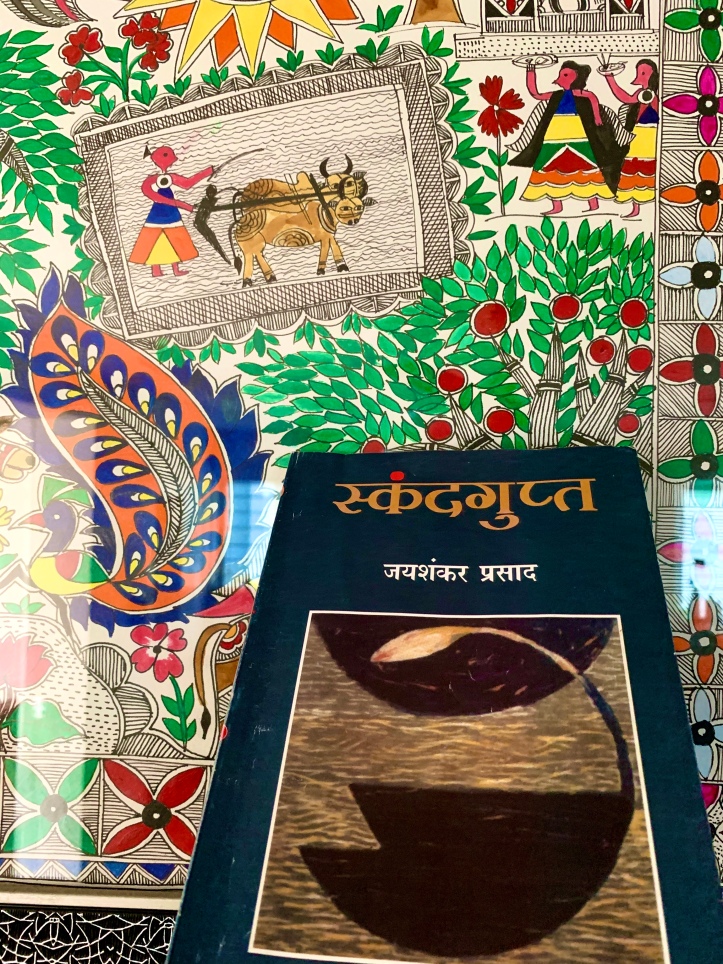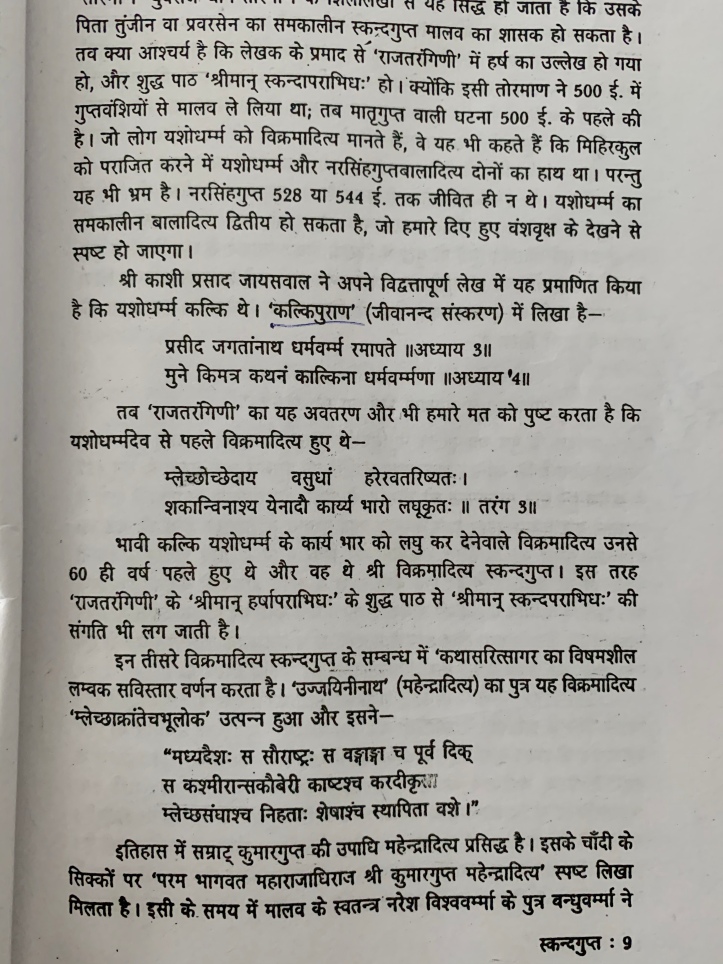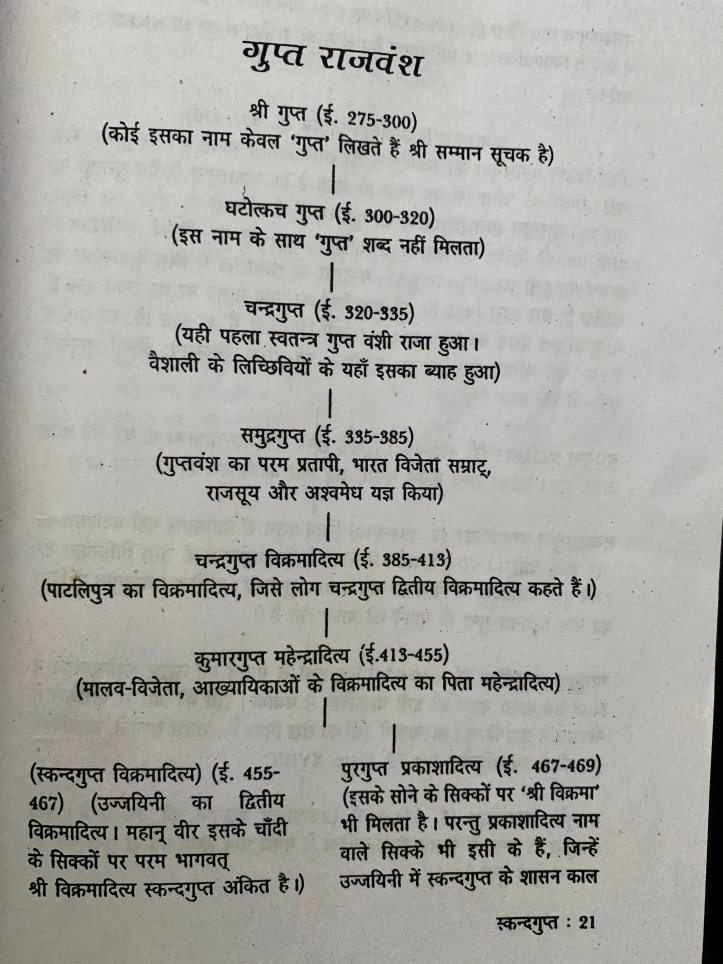Long long ago I had read “Dhruvaswamini” a play written by Jai Shankar Prasad for my course work. In learning about the writer I came to know he has written many other historical plays. Among those plays his best play is considered to be Skandgupt.

The last great emperor of the great Gupta dynasty Skandgupt, had got only one line in my history book because history is written by winners in war or election.
I wanted to know more about Skandgupt and I was impressed by Prasad’s in depth treatment of history hence I had been interested in reading this play Skandgupt since a long time.
Recently in our city book fair I was elated to spot the book. Almost as soon as I bought it I started reading it. It is a thin book so I had thought it would be a breeze to read.
And just how wrong I was!
The book is preceded by twenty pages long introduction, which is no less than a PhD thesis. It is a thesis written by the writer himself giving proofs and theories behind characterisation of characters, their names and the events mentioned in his play.

He has cited various experts, literary works and ancient rock inscriptions to theorise there are at least 3 Vikramadityas and 3 Kalidases. The play’s lead Skandgupt is the third Vikramaditya and a major character is the second Kalidas (Matrugupt).
I only wish the writer has given translation of the excerpts from Sanskrit and Prakrit languages for readers like me, who don’t understand these languages.
The detailed tree of emperors of Gupta dynasty given before the play helps the readers regarding clarity about the background.

The play covers the events starting from the time, when Skandgupt is the crown prince. Then he becomes the emperor and mobilises kings from other kingdoms to fight with him against the foreign oppressors Huns and Shakas. King of Malav and his whole family becomes Skandgupt’s most important ally.
A love triangle comes up here among Skandgupt, Malav princess and daughter of one of Malav’s important families. This leads to many heartbreaks and finally Skandgupt taking the pledge of staying single whole his life.
Apart from the love triangle, the play has many songs too like any Indian film. In fact while reading the book, I was constantly imagining how grand it would be to turn this play into a film!
Since beginning of the time few people in Bharat have been trying to keep enemies away while vested interest groups have been supporting the enemy to destroy this ancient land. Skandgupt faced deception from many including his own family members while fighting against Huns and Shakas.
Skandgupt’s character is so honourable that it borders on being stupid. Because of his misplaced honour he not only faced defeat occasionally but also began the process of his dynasty’s downfall by naming his good for nothing half brother as his successor.
Not only him all main chief characters are shown to be too good to survive in politics or war. Only practical positive character is prince and later the king of Simhala (Sri Lanka), who made the Buddhists allies of Skandgupt.
Maybe this has been the tragedy of our country, the good people are just too good.
Thanks to tutoring my daughter, I have been in touch with Hindi. Hence, I could smoothly read the book. Moreover, the Hindi in the book is Sanskritised Hindi hence easier for me to understand.
This is a must read for anyone interested to know more about ancient India than they read in their history book.
[…] to read at least 3 books from the category – one book in my mother tongue Odia, one book in Hindi since that is the only other Indian language I can read fluently, one book translated from […]
[…] https://jeeta.wordpress.com/2020/02/15/skandgupt-by-jai-shankar-prasad/ […]
[…] always heard wonderful things about the book. Under my reading plan of reading at least one book in Hindi, I took up the book this […]
[…] of the greatest writers in Hindi literature. Before this short story collection, I had read only Historical Dramas by him. I was quite impressed with his knowledge and research on some little known phases of Indian […]